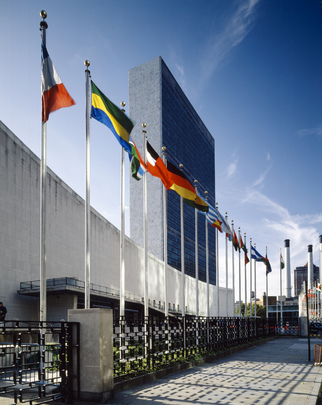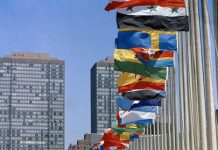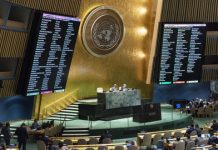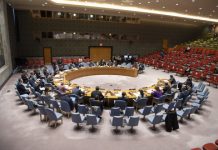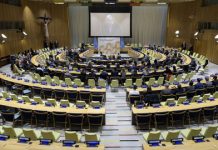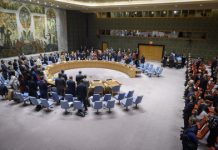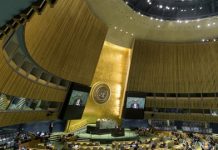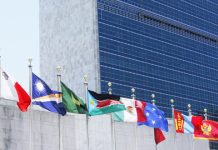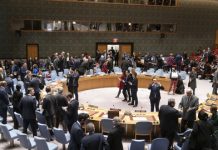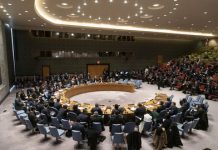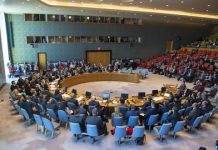“The scale of this tragedy, its impact on survivors, families and communities and the frequency with which we witness deaths in transit constitute an intolerable and utterly soluble, humanitarian crisis,” said Pär Liljert, director of the International Organization for Migration (IOM) Office to the UN, referring to one of the world’s most deadly routes for migrants and refugees, as they attempt to reach countries of the European Union.
In 2023, IOM recorded 8,542 migrant deaths globally – the highest since it began collecting this data in 2014 – with 37 per cent of these deaths occurring in the Mediterranean, he said.
Echoing that message, Sivanka Dhanapala, who directs the New York office of the UN refugee agency, UNCHR, told the Council the tragedies of lives lost on sea and land routes continue “with no end in sight”.
He said UNHCR has registered more than 350,000 refugees and asylum-seekers so far this year, many of them Sudanese refugees, seeking protection in North Africa.
Between January and August, over 134,000 refugees and migrants departed by sea from North and West Africa towards Europe, a 24 per cent drop from last year.
As of 17 September, the IOM Missing Migrants Project reported that 1,450 people were accounted as dead or missing during the crossing, a 44 per cent drop from 2023, he said, adding that in Libya, over 97,000 Sudanese refugees have arrived in the last year, with 300 to 400 people continue to arrive daily as the recent conflict in Sudan has triggered many to flee.
While numbers may be dropping, concerns remain, he continued.
Dearth of protection, safety and refuge
Mr. Dhanapala said there has been no improvement in access to protection along key routes alongside an increase in challenges relating to access to territory and asylum, evidenced by an increase in interceptions and collective expulsions.
A UN refugee agency report highlights major gaps in access to protection and humanitarian assistance along the routes and people moving are facing high risks of deaths, gender-based violence, kidnapping for ransom, trafficking, robbery and other physical violence, he said, citing a new joint report by UNHCR, IOM and the Mixed Migration Centre.
To remedy this dire situation, he offered a set of recommendations, including that human rights safeguards must be upheld, strengthening access to protection, prosecuting smugglers and increased search-and-rescue at sea.
“Saving lives at sea and providing humanitarian assistance is one of the most basic obligations of humanity, and those performing rescue operations or helping in good faith should not be penalised for doing so,” he said, adding that efforts must centre on inclusion, resettlement and complementary pathways for refugees and migrants while addressing the root causes.
IOM: Conflict among main drivers
IOM’s Mr. Liljert said the primary drivers are economic reasons (44 per cent), war and conflict (29 per cent) and the desire to escape from personal or targeted violence (26 per cent), according to the agency’s displacement tracking matrix (DTM) data from 2023 and 2024.
Compounding these hardships is the devastation caused by disasters, exacerbated by climate change, as well as challenges in host countries, he said, pointing to Libya as an example.
Almost 70 per cent of migrants IOM interviewed in Libya in June and July stated that high food prices were the main shock experienced prior to leaving the country while 63 per cent cited low or decreased daily wages.
At the same time, a UN Independent Fact-Finding Mission in Libya found that the country is not considered a safe place for disembarkation, with reports of rights violations, including detention, torture and trafficking.
Ever more dangerous routes
Mr. Liljert said migrants are pursuing even more dangerous pathways to reach Europe as is evident in the sharp increase of arrivals on the Western African Atlantic route.
The international community should not allow the Sahara Desert and the Mediterranean Sea to “continue becoming mass graves for migrants”, he cautioned, calling for ensuring search-and-rescue operations have a stronger focus on saving lives.
“We must move beyond reactive measures…with a holistic approach that tackles the adverse drivers of irregular migration,” he said, strongly encouraging the expansion of humanitarian pathways for those in search of safe refuge, including temporary protection permits, private sponsorships and family reunification, among others.
“By adopting these measures,” he said, “we can not only reduce the immense human suffering associated with irregular migration, but also create sustainable, long-term solutions that promote peace, stability and shared responsibility.”
Source of original article: United Nations (news.un.org). Photo credit: UN. The content of this article does not necessarily reflect the views or opinion of Global Diaspora News (www.globaldiasporanews.com).
To submit your press release: (https://www.globaldiasporanews.com/pr).
To advertise on Global Diaspora News: (www.globaldiasporanews.com/ads).
Sign up to Global Diaspora News newsletter (https://www.globaldiasporanews.com/newsletter/) to start receiving updates and opportunities directly in your email inbox for free.


